Joe Pye Weed is a classic American perennial, and a garden favorite for generations. It is tall, beautiful, long-blooming, and easy to grow. It is a butterfly magnet. Whenever we are asked about the best plants for pollinators, Joe Pye Weed is at the top of the list.
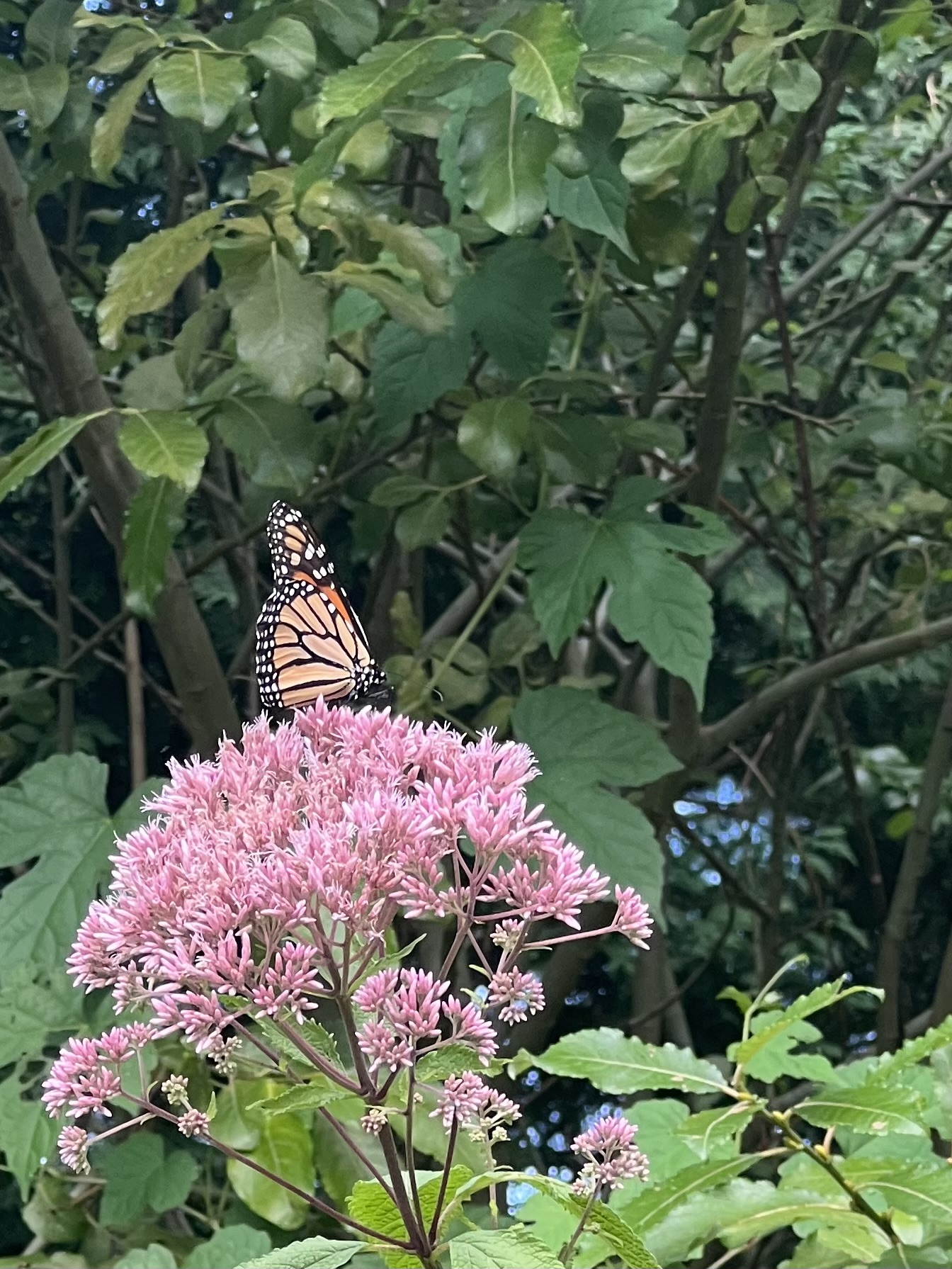
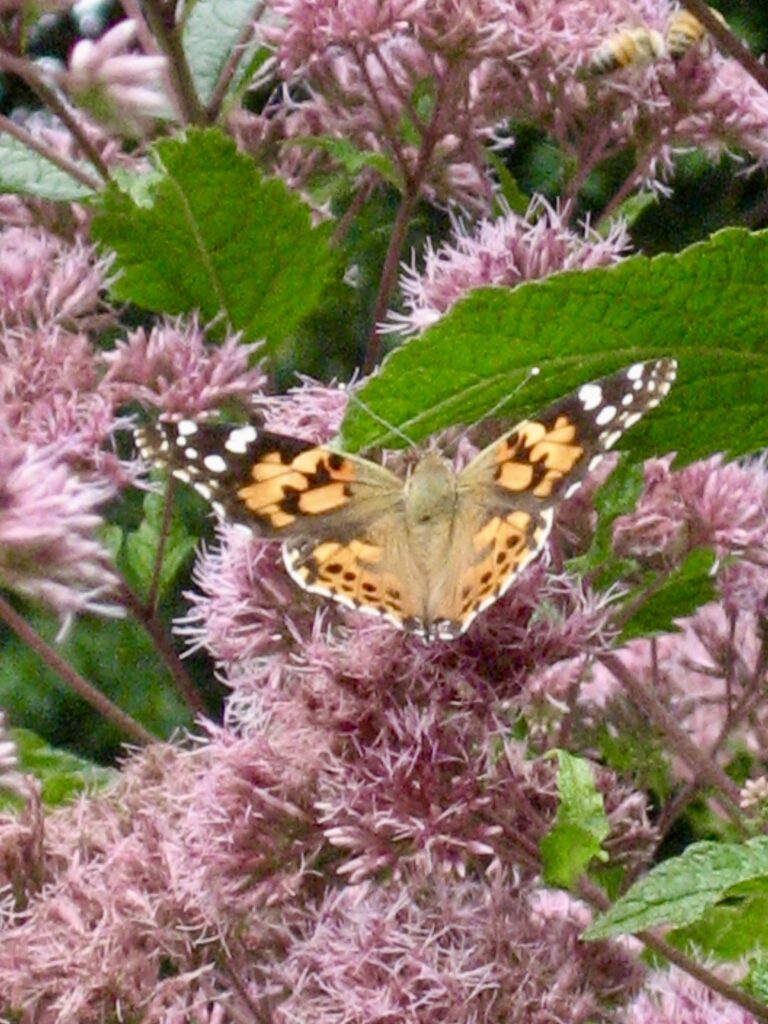
Native to wet meadows in the Eastern half of the US, Joe Pye Weed nurtures butterflies, bees, and is the host plant for more than three dozen species of moth and butterfly caterpillars. It is a great alternative to non-native “Butterfly bush” (Buddleia spp.), not only because it attracts as many or more butterflies, but because it also allows them to reproduce. Caterpillars native to the US cannot eat the leaves of “Butterfly bush,” so Joe Pye Weed is the right choice if you want more butterflies.
There are five species of Joe Pye Weed, which is the common name of all five plants in the genus Eutrochium (formerly part of the genus Eupatorium), and all are North American natives. The main difference among them for gardeners is height. Hollow Joe Pye (Eupatorium fistulosum) is the tallest at around 10 feet. Spotted Joe Pye (Eupatorium maculatum) is usually about 6 feet tall, and Coastal Joe Pye (Eupatorium dubium) is the shortest at about 4 feet, with a cultivar marketed as ‘Baby Joe’ growing only 3 feet tall. They all bloom from late summer through fall, and they all have big flower clusters in shades of pink to lavender. Hardy in Zones 3 to 9 and deer resistant, Joe Pye looks great at the back of a formal flower bed or along a rustic fence.
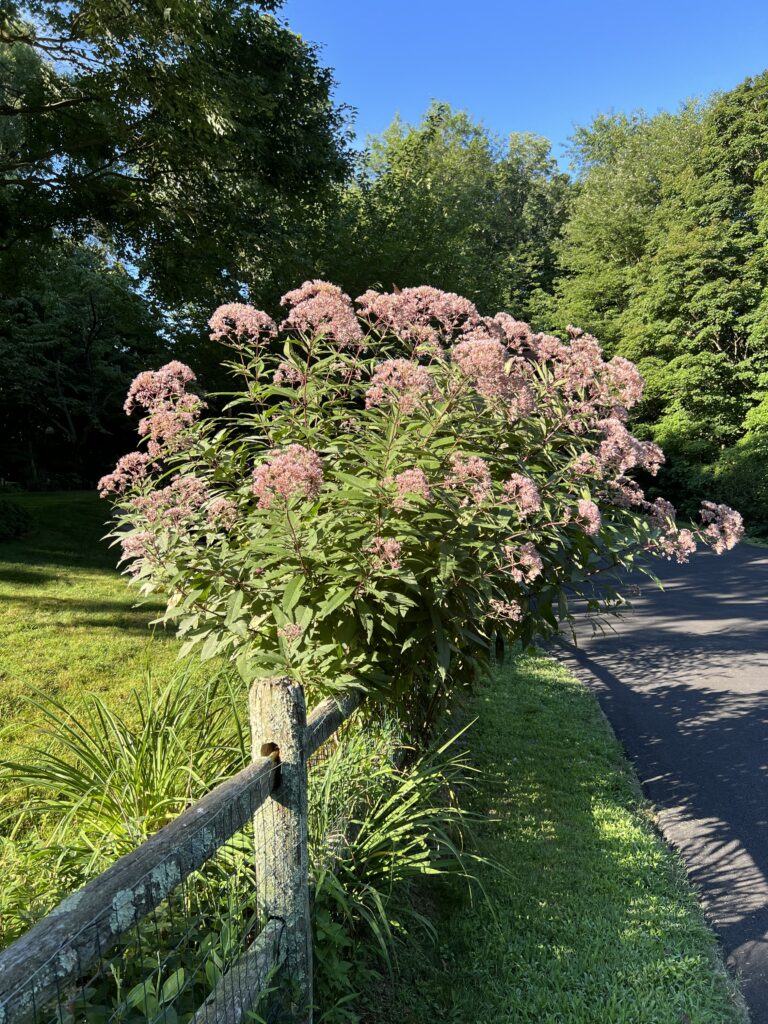
The flowers of Joe Pye Weed go through a fascinating progression. The initial buds are almost silver. From there, they develop into clusters, 4 to 8 inches across, composed of tubular pink blossoms. Each tube then emits a single forked pistil, the female reproductive part. The male pollen-bearing stamens remain hidden inside the tubular structure. The huge array of pistils over the top of the flower mass ultimately creates a fuzzy appearance.
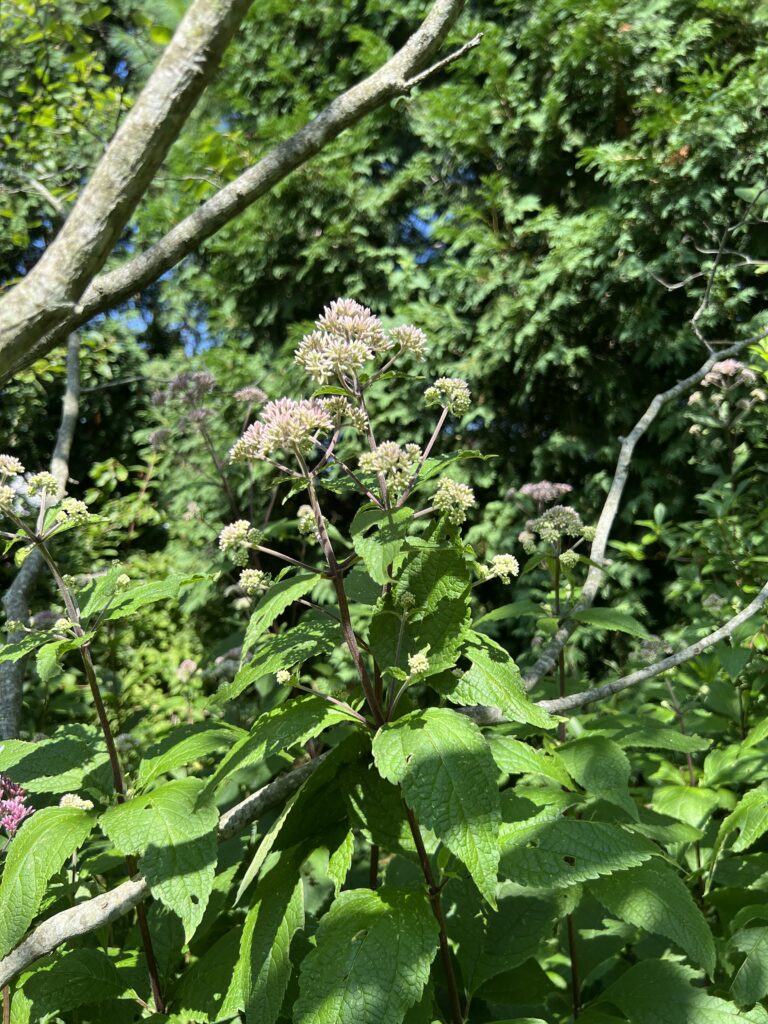
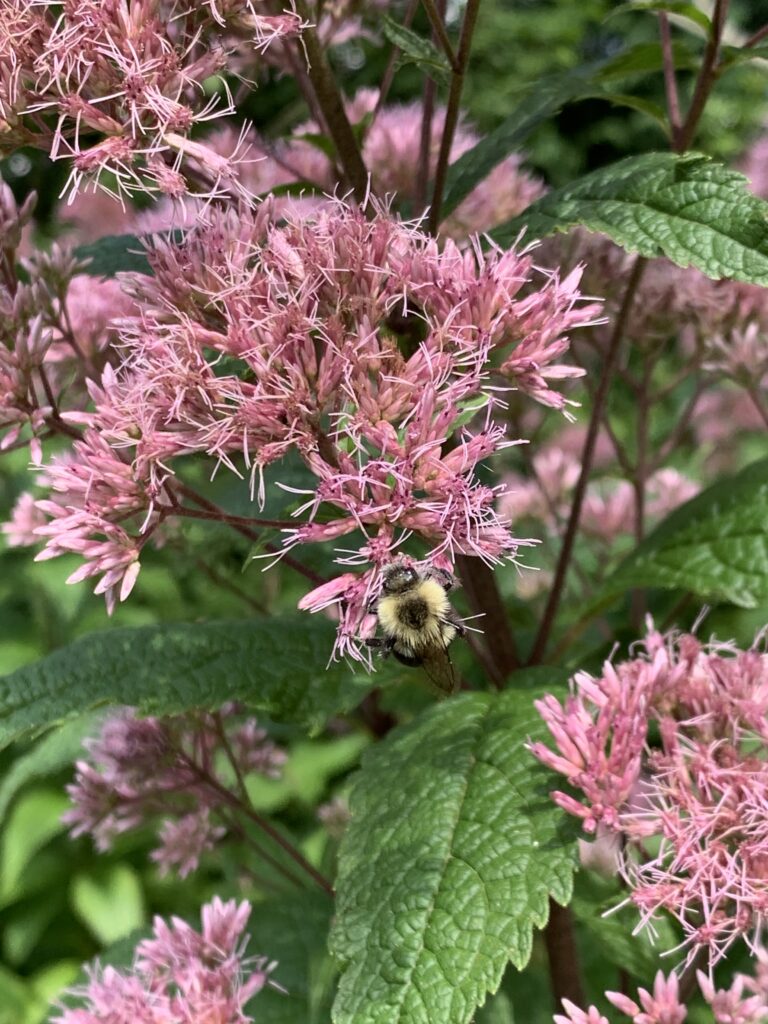
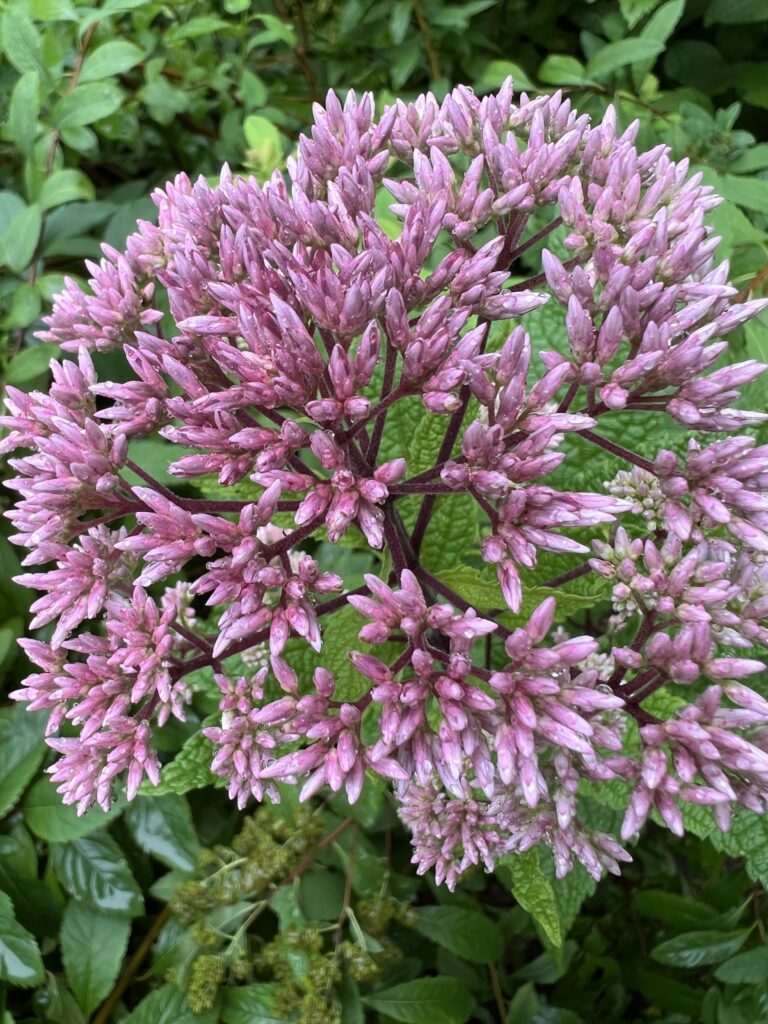
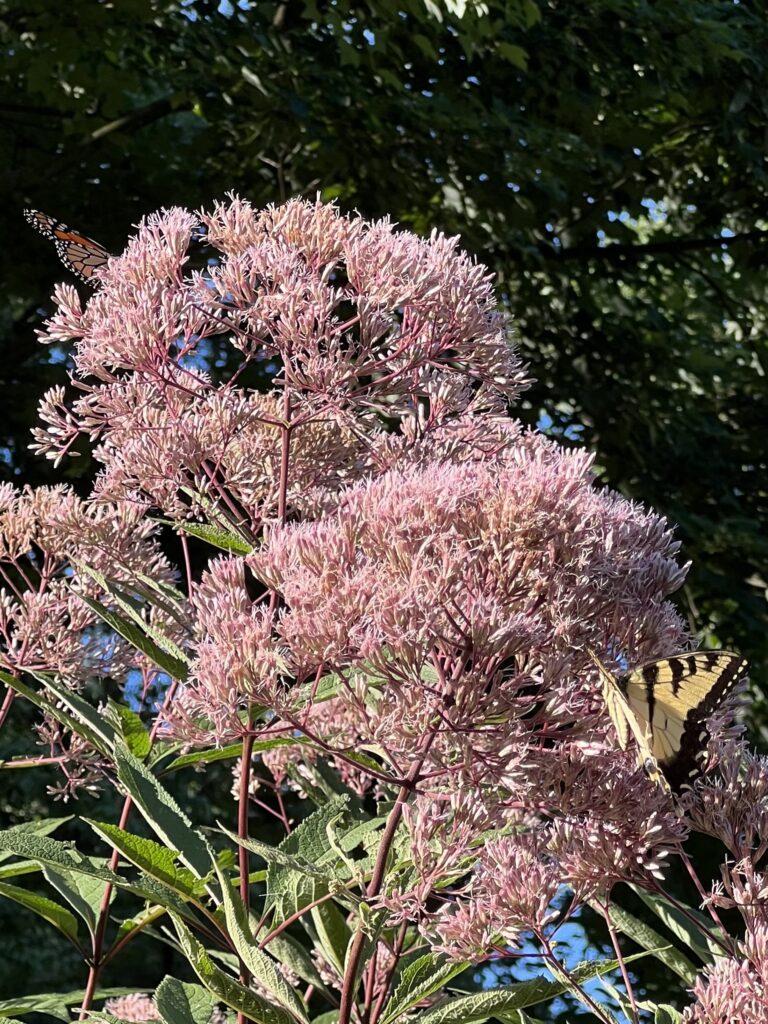
Joe Pye Weed does best in wet sunny areas, so it is perfect for a rain garden, or a low spot too soggy for lawn. Though it is not particularly drought tolerant, Joe Pye manages well in our Meadow at the Nature Center without irrigation.
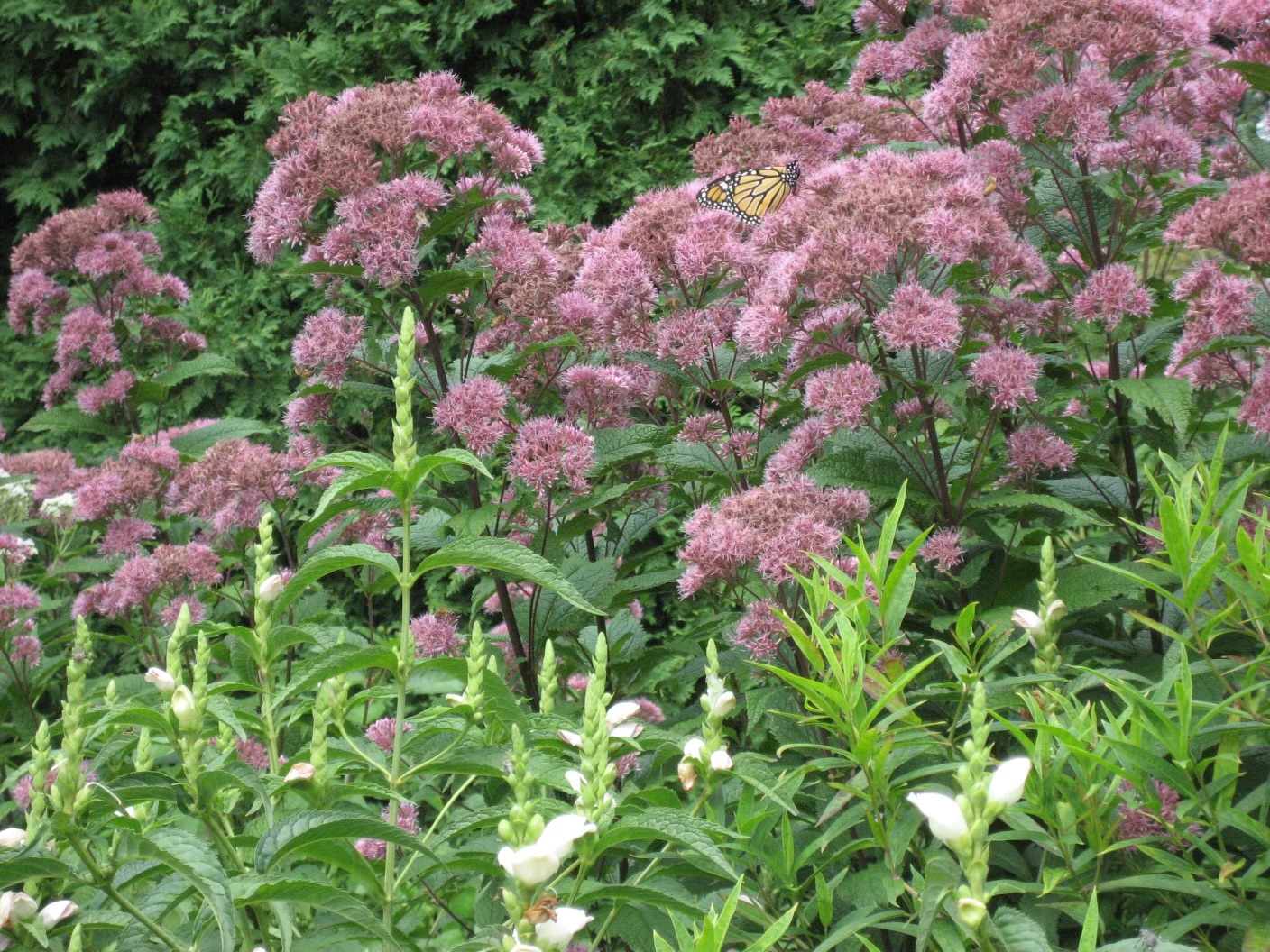

So, who was Joe Pye and why was this wonderful plant named for him? There was a story, repeated in various forms over the past 100 years or so, that Joe Pye was “an Indian medicine man” who saved an entire colony of English settlers in the 1600’s from typhus fever using a tea made from the plant. As with many such stories, the details often changed in the telling, and the only cited source was “legend has it.” Recently, however, curiosity prompted the first scholarly research on the question, and in 2017, Richard B. Pearce and James S. Pringle published their findings in The Great Lakes Botanist journal. They concluded that the plant was likely named for Joseph Shauquethqueat, a highly-respected Mohican sachem or paramount chief, also known to white neighbors as Joe Pye, who lived in the Mohican community in Stockbridge, Massachusetts in the late 1700’s to early 1800’s. Although there is no evidence that he was an herbalist or ever used or recommended the plant medicinally, many members of the First Nations did know of the medicinal properties of the plant. Pearce and Pringle speculate that since Joseph Shauquethqueat was also a selectman in Stockbridge, well-known and respected by his white neighbors, “it would not have taken many observations of his collecting the plants now called Joe-Pye-weed for medicinal use, or suggestions from him that they use those plants for the treatment of fevers…before someone, when referring to those plants, associated them with the man they knew as Joe Pye.”

Joseph Shauquethqueat was a remarkable man. Remembering him with a plant as remarkable as Joe Pye Weed is a worthy honor, indeed.

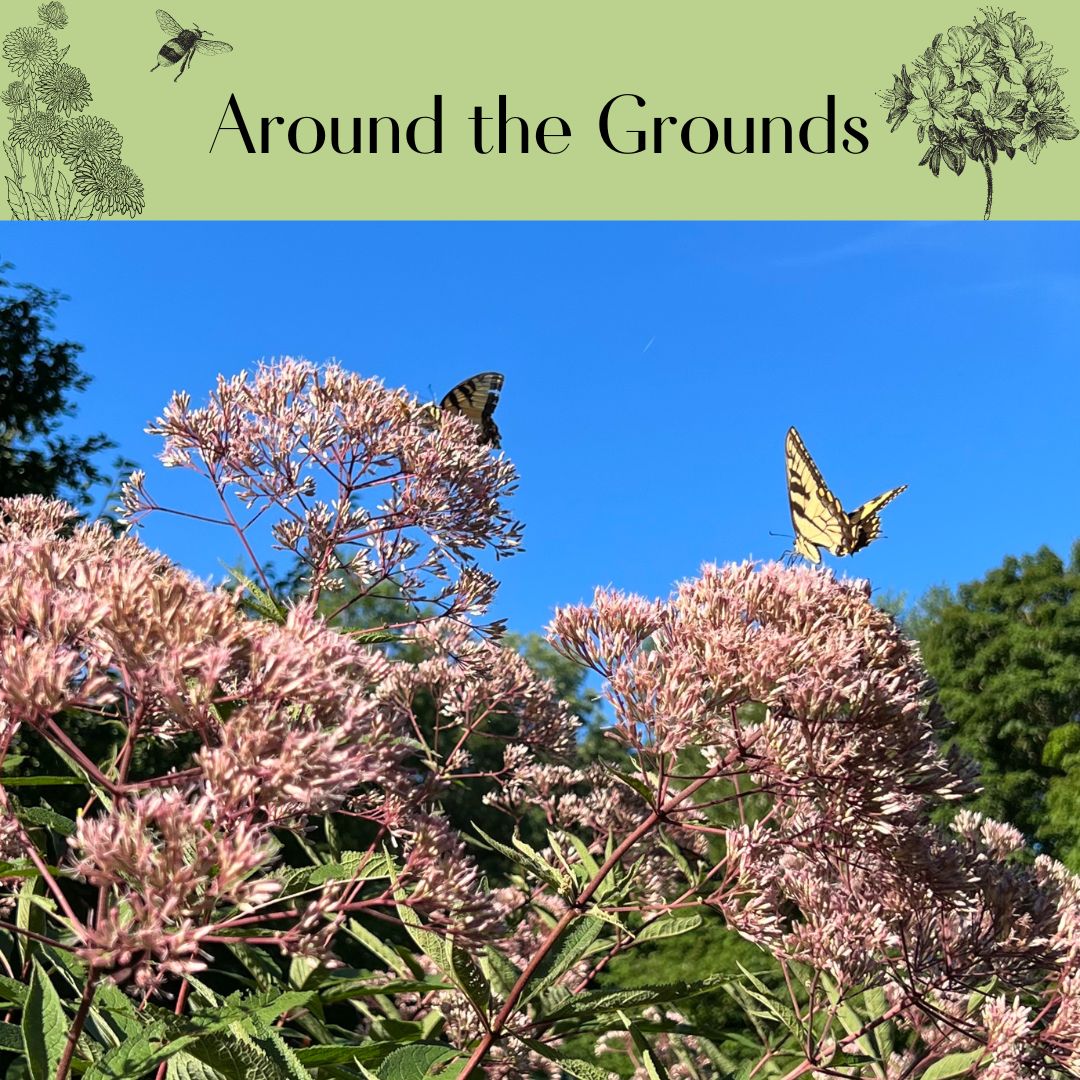
I love this dearly. I’m founder of nonprofit, Native Plant Rescue Squad, in Knoxville Tennessee. We work with developers and property owners to remove plants in the path of destruction and make them available for conservations projects and the community. All varieties of this species are so coveted, we call it covet itch! They aren’t as common this day and age because of all the population growth. It’s our job to restore and get these sweet babies back in our ecosystem.
I have a so-called dwarf variety of Joe Pye Weed that is fairly dry and is does just fine. I enjoyed learning who Joe Pye was!
For a wetland plant, it is amazingly drought tolerant. I’ve been surprised to see it thriving after 2+ months of drought in our area.
Love the plant and love the history lesson! If only we let the Indians show US how to live, instead of the other way around … what a different world it might be today.
True! I wonder whether we should be paying more attention to the medicinal uses of these plants valued by indigenous peoples. If Joe Pye really can reduce fever, that would be good to know. I’m never sure whether modern science validates the traditional medicinal uses or not.
Fascinating!
I haven’t considered rain gardens and could use more information about them.
Well, we haven’t had much need of our rain gardens this summer, but they are really important to reduce runoff when we have downpours. Good suggestion, Sandy, for a future post. I’m the meantime, let it rain!!